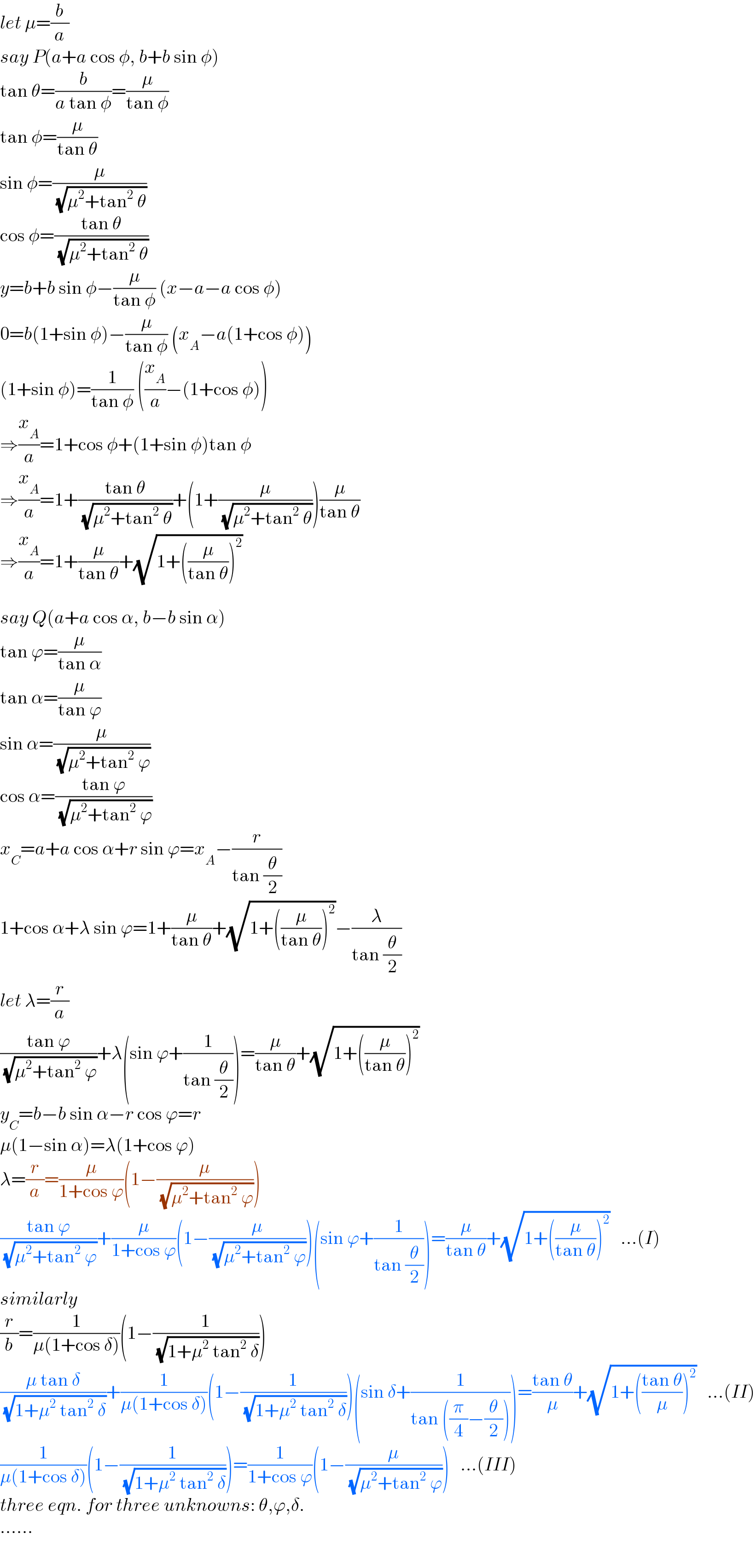
Question and Answers Forum
Question Number 131420 by ajfour last updated on 04/Feb/21

Commented by ajfour last updated on 04/Feb/21

Answered by mr W last updated on 04/Feb/21

Commented by mr W last updated on 05/Feb/21

Answered by ajfour last updated on 04/Feb/21

Commented by mr W last updated on 05/Feb/21

